Conditions which lead to the deterioration of works on paper
‘Anoxia’ means ‘lack of oxygen’. Works of art are usually stored and displayed in air, which includes 21% oxygen. Exposure to oxygen leads to deterioration of most materials through two processes: oxidation and hydrolysis. Light exposure and the presence of moisture play an important role in any degradation: display in gallery lighting and normal air eventually leads to deterioration of each component of the artwork.
This is why paper-based works of art are displayed for only limited periods. At Tate, a maximum of two years’ display in controlled conditions is allowed in every four-year period.
The possibility of anoxic display

Version 1 of the lightfastness tester developed at Tate
Tate has been investigating the possibility of anoxic display, as well as storage, since the late 1990s. Paper conservators have built frame packages with light-sensitive materials inside to demonstrate how fading of colours can be slowed in low-oxygen conditions. The first step was to build and test a reliable enclosure that could maintain a low-oxygen and/or inert gas atmosphere for up to ten years.
Additionally, the enclosure had to be of sufficiently low cost that it could be used for entire exhibitions, and it had to slot onto existing Tate frames. This was achieved during a one-year project carried out in 2004–5 by a former Tate framing technician.
Developing Tate’s understanding of anoxic display
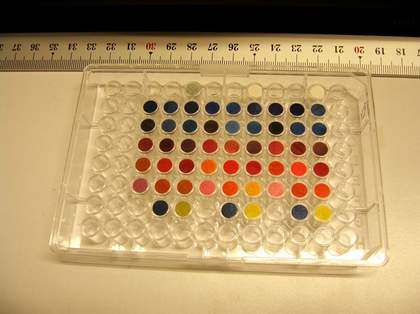
Pigment samples ready for lightfastness testing
Further funding was obtained in September 2006 and two doctoral researchers joined the section for a three-year period. The first, a chemist and paper-maker, studied the degradation of paper, the best oxygen concentration to conserve different types of material and methods to analyse the internal atmosphere of a sealed frame.
The second researcher, a specialist in optics, developed a Microfadometer, an instrument which can measure the light-fastness (fading rate) of pigments and dyes at varying levels of oxygen.
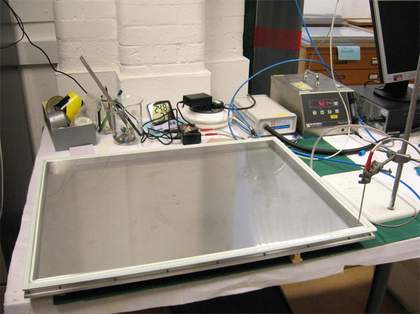
Monitoring oxygen in an anoxic test frame
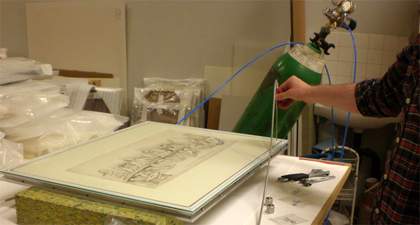
Version 1 of the lightfastness tester developed at Tate
As a result of this research, a patent is pending and the project has now moved into a new phase of development, led by Amanda Heath, Project Manager. This includes optimising the frame design for use in multiple exhibitions and researching more materials in anoxia in the special laboratory created for the project at Tate Britain.
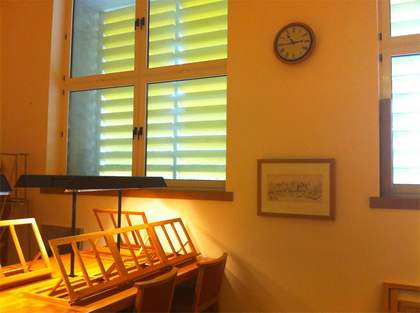
Rowlandson on display in Historic Prints & Drawings Room
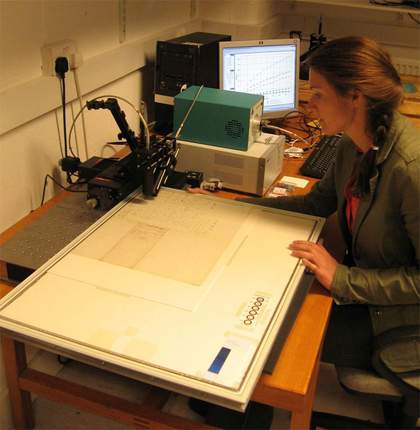
Dr Judith Bannerman testing the lightfastness of an iron gall ink document in an anoxic frame
